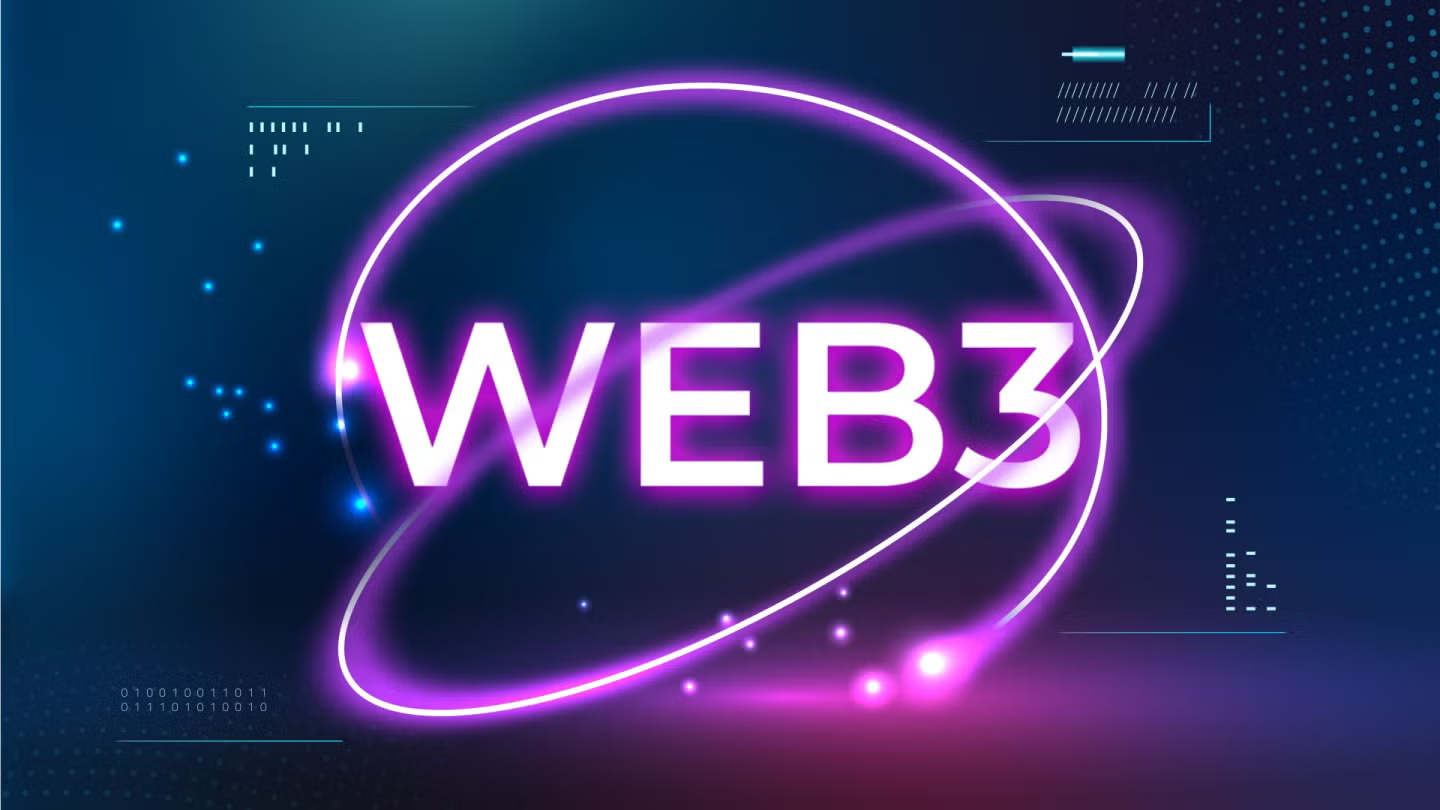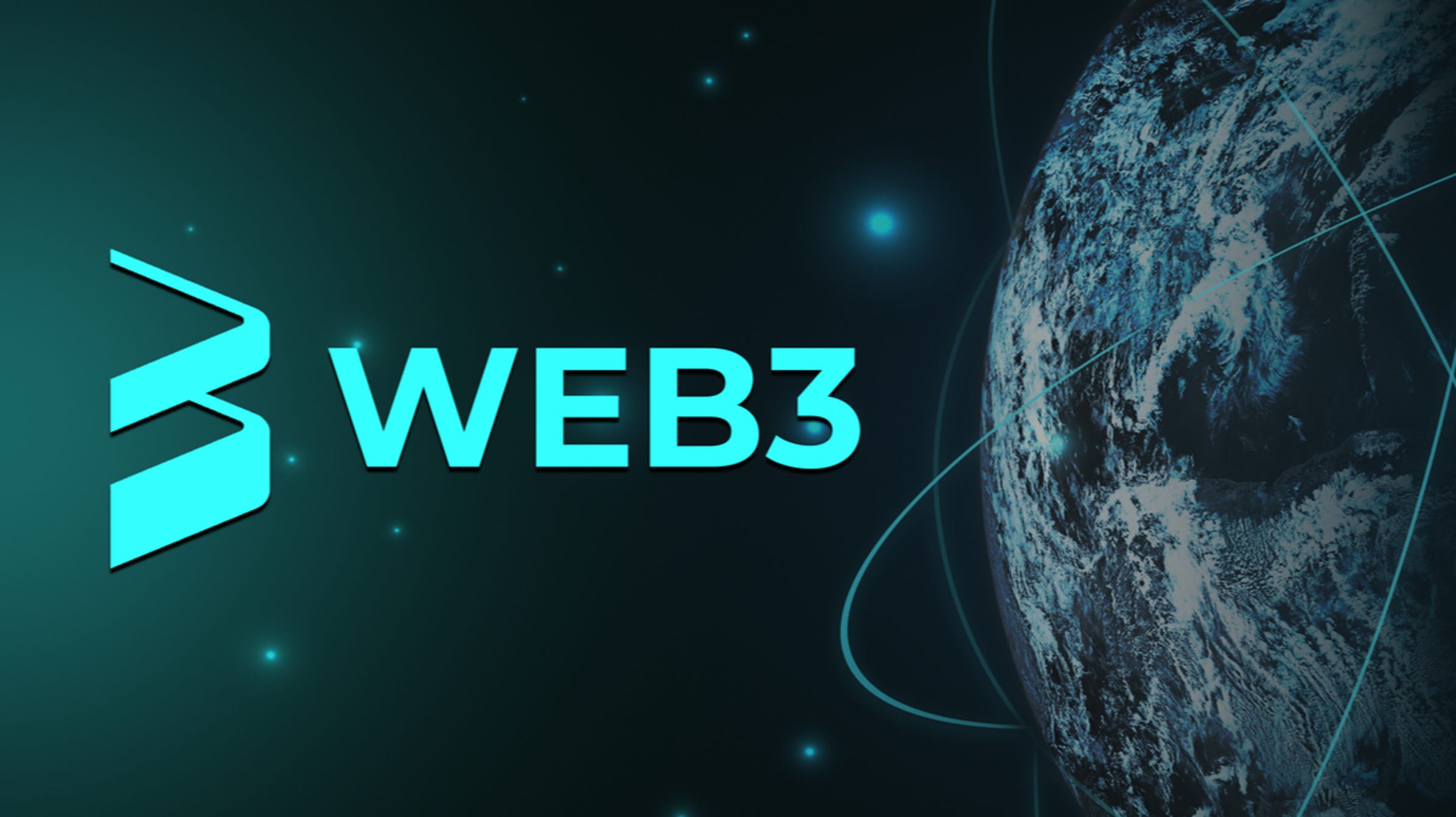Developers are jumping into the Web3 space faster than ever. Over the last few years, demand for blockchain talent and decentralised skills has exploded. Businesses and individual creators alike want a ‘web3 starter pack‘ to stay ahead, tapping into tech that’s shaping finance, gaming, supply chains, and more.
The energy in the developer community is easy to see—everyone’s eager to explore new blockchain protocols, try out Web3 tools, and deploy smart contracts. With breakthroughs in AI, decentralized platforms, and blockchain infrastructure rolling out at a record pace, industries are changing from the ground up. The web3 starter pack is now a must-have, making it easier to build, test, and launch apps that are trustless and transparent.
As more enterprises place their bets on decentralisation and tokenisation, Web3 development is turning from a trend into a core part of the digital economy. This guide unpacks the essentials every developer needs, helping both newcomers and veterans stay on track as Web3 moves mainstream in 2025.

The Web3 Starter Pack: Fundamental Skills and Tools
The web3 starter pack isn’t just a buzzword. It’s a focused set of skills and tools that will get any tech-minded creator from zero to blockchain-ready in 2025. With Web3 riding a wave of demand, knowing which programming languages matter, what tools power innovation, and how blockchains tick is key. Here’s what every developer should know before building smart contracts or decentralised apps.
Programming Languages for Web3 Development
Not all programming languages are built for blockchain. The web3 starter pack comes down to picking the right tools for the right chains:
- Solidity takes centre stage on Ethereum and its compatible networks, like Polygon and Binance Smart Chain. Think of it as the gold standard for writing smart contracts that power DeFi apps, NFTS, DAOS, and more. Solidity’s syntax is close to JavaScript, so web developers can learn quickly.
- Rust is popular for building on blockchains focused on speed and safety. Solana, NEAR, and Polkadot rely on Rust for their core smart contracts and validators. Rust’s memory management and safety checks prevent a lot of common bugs and make it a go-to for high-stakes code.
- JavaScript still holds its crown on the web, especially in the world of frontend dApps. Libraries like
Web3.jsandEthers.jsLet apps talk to Ethereum and other chains, handling wallet connections and blockchain reads. Polygon and many Ethereum Layer 2 chains are JavaScript-friendly, making it the glue between blockchain and browser.
Bottom line: Solidity means Ethereum. Rust means high performance on next-gen networks like Solana. JavaScript powers UIS everywhere. Together, they form the backbone of every serious web3 starter pack.
Essential Tools in the Web3 Starter Pack
Building for Web3 is easier when the right toolbox is at your fingertips. The essentials cover coding, testing, and wallet interaction:
- MetaMask: The leading crypto wallet for browsers and mobile. Developers use it to simulate user flows, manage test tokens, and sign transactions locally.
- Remix: An online IDE designed for writing, compiling, and deploying Solidity contracts on Ethereum and testnets. It’s perfect for rapid prototyping and beginner-friendly edits.
- Truffle Suite: A development framework for Ethereum. Truffle covers project structure, automated testing, and contract migration with strong community support.
- Hardhat: Used for Ethereum smart contract workflows, Hardhat offers advanced debugging, testing, and network simulation. Its scripting and plugin features stand out for pros.
- Ganache: Local Ethereum blockchain for instant, private testing. Developers spin up quick blockchains, mint tokens, and debug contracts without risk or cost.
- Ethers.js and Web3.js: JavaScript libraries that bring wallet, contract, and transaction features to any web app. If you want a dApp UI to talk to the blockchain, these libraries are a must.
Here’s a quick list of what’s always in a complete web3 starter pack:
- Wallets: MetaMask, WalletConnect.
- IDES: Remix.
- Testnets & Blockchain Simulators: Ganache, Hardhat Network.
- Frameworks: Truffle, Hardhat, Foundry.
- Libraries: Ethers.js, Web3.js, OpenZeppelin for reusable secure contract templates.
These tools help cut build time, uncover bugs, and safely test before hitting the mainnet.
Understanding Blockchain Fundamentals
A solid grip on blockchain basics separates true builders from hobbyists. The web3 starter pack covers these building blocks:
- Blockchain structure: At its core, a blockchain is a shared ledger of data blocks, each chained to the next using cryptographic hashes. Decentralised nodes keep copies to make tampering nearly impossible.
- Consensus mechanisms make trust possible without middlemen:
- Proof of Work (Pow): Used by Bitcoin, miners solve math puzzles to add blocks. It’s energy-hungry but proven for security.
- Proof of Stake (PoS): Used by Ethereum 2.0, Solana, and others. Validators lock tokens and are chosen to add blocks based on their stake, greatly reducing energy use.
- Zero-Knowledge Proofs (ZKPS): Advanced cryptography that lets one party prove something is true without sharing the details. ZKPS boost privacy and is part of the latest Layer 2 scaling efforts.
- Cryptography is at the heart of keeping data secure. Private and public keys sign transactions and control access to wallets and assets. Without cryptography, none of this would work.
Knowing how blockchains, consensus, and cryptography work means developers can spot risks early and build apps that users trust. This knowledge is at the core of every well-equipped web3 starter pack, giving devs the confidence to ship secure, modern dApps for 2025 and beyond.

Emerging Trends in Web3: AI, Decentralised Storage, and Interoperability
Web3 isn’t standing still as we head into 2025. Developers and startups are moving past early experiments—now they’re plugging in real tech muscle powered by AI, privacy tools like zero-knowledge proofs, decentralised storage, and frameworks designed to connect different blockchains. These changes aren’t just hype—each one is shaping what goes in every developer’s web3 starter pack. Let’s break down a few of the most important shifts.
AI-Assisted Development and Security
AI isn’t just a buzzword in the Web3 space—it’s quickly becoming part of daily development and operations. The smartest teams are using AI to handle tough security jobs, especially in auditing and maintaining smart contracts.
- Automated Auditing: AI-powered tools can review smart contracts for bugs, vulnerabilities, and compliance errors much faster than traditional approaches. This means devs can catch issues before they turn into expensive exploits, building more trust in dApps and DeFi projects.
- Predictive Analytics: By tracking real-time blockchain activity, AI can highlight suspicious patterns early, flagging threats like rug pulls or wallet drains. It’s like having a digital security guard on duty 24/7, delivering peace of mind for both builders and end users.
- Smart Operations for DAOS: AI algorithms can streamline DAO (Decentralised Autonomous Organisation) decision-making. They sort proposals, forecast community engagement, and even automate routine management, making DAOS more responsive and less prone to human error.
For developers putting together a 2025 web3 starter pack, these AI integrations are quickly turning from “nice-to-have” to “must-have.” They help teams ship safer contracts, react faster, and manage on-chain communities with less friction.
Decentralised Storage and Edge Computing
No Web3 project gets far without secure, persistent storage. With dApps, NFTS, and the metaverse all relying on massive amounts of data, developers are finding that old-school, centralised servers just don’t cut it anymore.
- IPFS (InterPlanetary File System): This protocol lets users host and share content across a network of independent nodes, not a single company’s servers. It’s the backbone for NFT image storage and metadata, ensuring digital assets can’t vanish if one system fails.
- Arweave: Built for permanent storage, Arweave gives apps a “write once, store forever” guarantee. NFT projects, blockchain games, and metaverse apps trust Arweave to hold important user data, art, and in-game assets for the long haul.
- Edge Computing: By pushing computation and data storage closer to the user (the network edge), projects can reduce delays, cut costs, and improve performance. This is critical for real-time games, AR/VR experiences, and anything built for the next-gen internet.
Choosing decentralized storage and edge solutions is now a core part of any modern web3 starter pack. These pave the way for apps that respect user ownership, protect creator royalties, and guarantee long-term access—even if the original service ever disappears.
Multi-Chain and Cross-Chain Frameworks
The days of building only for a single blockchain are over. Interoperability is now table stakes for Web3 success. Projects hoping to reach more users and survive future cycles need to play nice with different chains.
- Polkadot: This network lets developers spin up “parachains”—blockchains with their own rules, but that still talk to each other and the wider Polkadot network. It streamlines everything from DeFi swaps to creative NFT launches in multi-chain ecosystems.
- Cosmos SDK: Cosmos aims for the “internet of blockchains” vision. Its modular SDK lets developers build custom blockchains that can plug in seamlessly to other Cosmos-tied projects using the Inter-Blockchain Communication (IBC) protocol.
- LayerZero: Pushing cross-chain communication further, LayerZero allows contracts to talk to each other right across multiple chains—Ethereum, BNB Chain, Avalanche, and beyond. Building on LayerZero means projects don’t have to bet on a single network, and users can move assets or data more freely.
As more frameworks emerge, any serious web3 starter pack in 2025 must include tools for handling multi-chain logic. Interoperability isn’t a “bonus feature” anymore—it’s a best practice underpinning user growth, liquidity, and future-proofing of Web3 products.
Key takeaway: Developers in 2025 need to master new tools and trends—from AI security helpers to decentralized file networks and frameworks that break blockchain silos. Keeping a web3 starter pack up to date with these emerging innovations is the clearest way to build secure, scalable, and future-ready dApps.

Web3 Project Launch: Community-Driven Growth and Funding Innovations
The energy around launching new Web3 projects in 2025 is electric—and it’s community-powered. The playbook has shifted. Instead of knocking on VC doors, developers and founders are tapping into decentralized funding routes that open the door for anyone, anywhere, to participate. The web3 starter pack has expanded to include bold community initiatives, innovative token launches, and a focus on fair, accessible growth. Here’s how startups are making it happen.
Initial DEX Offerings (IDOS) and Tokenomics
IDOs have quickly moved to the center stage for any ambitious Web3 project. With Initial DEX Offerings, teams raise capital by launching new tokens directly on decentralized exchanges—no middleman, no lengthy negotiations with investors.
Here’s the technical breakdown of how IDOS work:
- Decentralised Access: Anyone with a compatible crypto wallet can participate, making fundraising open and inclusive.
- Smart Contracts Power Distribution: Smart contracts automate the entire process—from accepting payments to releasing tokens—cutting out manual errors and ensuring fair play.
- Instant Liquidity: The project’s token pairs with major cryptos in a liquidity pool. As soon as the IDO ends, trading starts. This immediate market presence gives both founders and buyers confidence.
- Permissionless and Trustless: There’s no central authority. IDOS runs on blockchain rails, removing barriers and lowering costs.
- Flexible Tokenomics: Projects use tokens for real utility, governance voting, rewards, and more. Creative tokenomics strengthens communities and gives tokens actual use beyond speculation.
Why are IDOs now a staple in the web3 starter pack? They align with the movement toward open, community-driven innovation. By removing the old-school gatekeepers, founders get to keep their vision pure—and builders can harness global momentum fast. Of course, this new freedom means higher stakes: with the lack of regulation comes responsibility. Teams must design transparent tokenomics, double down on security, and share their plans openly to build early trust.
Community Building and Incentives
The most successful Web3 projects didn’t just launch— they rallied passionate users around them from day one. In the web3 starter pack, community building isn’t just a box to tick off. It’s the rocket fuel for lasting growth, retention, and organic buzz.
Winning strategies include:
- Active Communication: Strong projects keep users in the loop with frequent updates, AMAS (Ask Me Anything), and open feedback channels.
- Airdrops: Giving away tokens through airdrops rewards early adopters, encourages new sign-ups, and helps kickstart user engagement. It’s a simple way to reward loyalty and attract buzz.
- Incentive Programs: Launchpads, bug bounty programs, staking rewards, and referral bonuses turn users into stakeholders. These incentives give people a real stake in the project’s success.
- Decentralised Governance: Many teams now launch DAOS (Decentralised Autonomous Organisations), letting community members vote on proposals and shape project direction. This creates a sense of shared ownership.
- Quadratic Funding and Grants: Some projects give community members the power to direct funding toward initiatives they care about, using transparent public voting and grants. This builds trust and surfaces fresh ideas.
Developer teams are prioritising access and transparency to build enduring communities. The message is clear: the door is open, everyone’s contribution matters, and success gets shared.
In 2025, launchpads, IDOS, and open incentive programs have taken their place at the heart of the web3 starter pack. Grassroots growth has proven to be more resilient and rewarding than old-school VC funding. The future? It’s powered by builders and believers, all pushing for projects that anyone can join and help grow.
Challenges and Rewards: Why Web3 Developers Are in High Demand
The surge in Web3 development isn’t just hype—it’s responding to the global chase for trustless apps, decentralised tools, and borderless innovation. As more industries plug into blockchain tech, the need for skilled Web3 developers has skyrocketed, making them some of the most sought-after professionals in tech right now. The web3 starter pack isn’t complete without understanding both the golden opportunities and tough challenges that come with this booming field.
Career Opportunities and Salaries in Web3
It’s no secret: Web3 developer roles are some of the highest-paying in tech. Entry-level Web3 builders can expect anywhere from $70,000 to $120,000 per year, but most experienced blockchain developers land between $130,000 and $270,000—and that’s before tokens, bonuses, and equity come into play.
A few points make Web3 stand out for smart job seekers:
- Remote-first by design: About 70% of Web3 jobs are fully remote. Developers aren’t tied to one city; they can work for global teams from anywhere.
- Hubs of opportunity: While remote work is standard, places like Singapore, Dubai, and Portugal are magnets for blockchain startups and stable regulation, offering in-person perks, tax advantages, and networking hotspots.
- Fast-track to growth: The field’s skill shortage means fast promotions, the ability to pivot into higher-impact roles, and even the chance to shape company direction early.
- Institutional money is pouring in: Big banks, investment giants, and well-known tech firms are hiring for Web3 roles, bringing stability and new layers of compensation—think 401(k)s, health plans, and stock options, not just tokens.
- Cross-disciplinary work: Web3 isn’t just about coding. Legal knowledge, DeFi chops, security skills, and business sense all add value, and developers who diversify see even higher earning potential.
Key takeaway: For anyone adding Web3 skills to their starter pack, the upside can be life-changing—higher than average pay, perks, flexibility, and the chance to lead in a space that’s still wide open.
Security, Regulation, and the Fast Pace of Web3
Web3 offers big rewards, but there’s no hiding from the hurdles. Security is always top of mind. When you’re dealing with real money, NFTS, and user data on open networks, even tiny mistakes can cost millions or erode trust overnight. Developers face:
- Constant security pressure: Blockchain code is public, transparent, and immutable. There’s no patching after launch. Hackers are on the lookout for weak contracts 24/7.
- Evolving tech stack: New tools, blockchains, and protocols drop almost monthly. Staying ahead means always learning, which can be both exciting and exhausting.
- Regulatory unknowns: Different countries create new rules for tokens, DeFi, and NFTS all the time. Developers need to keep up on KYC (Know Your Customer), AML (Anti-Money Laundering), and other compliance demands. In 2025, growth in regulatory frameworks (like the EU’s Mica or shifts by the U.S. SEC) is shaping hiring and development priorities.
- Talent gap: There are more open jobs than qualified builders. This means even top devs have to wear multiple hats—security, business, compliance, product, and more.
- Community scrutiny: Web3 projects often run in the open. Launches and code audits are public events, with thousands of eyes (and critics) watching every move.
But with these challenges comes a unique sense of purpose and reward:
- Builders get real ownership: From equity to governance tokens, devs shape outcomes and share in project wins.
- Impact at scale: Every new contract, tool, or DAO can influence thousands or even millions of users directly, with little waiting for approval from higher-ups.
Summary: Adding security, compliance, and rapid learning skills to a web3 starter pack is non-negotiable. The highest rewards go to those who thrive in an environment where the tech is new, the rules are still forming, and the community expects every developer to learn fast and ship with care.
Conclusion
Web3 development is not slowing down—developers who get started now have an edge. The web3 starter pack is the gateway to building skills with real impact across finance, gaming, and beyond. New tools, growing communities, and rapid changes mean adaptability matters just as much as technical chops.
By jumping in early, creators ride the momentum as regulations settle and innovation spreads. Every new developer adds to the strength of this open ecosystem. Now is the time to pick up the web3 starter pack, connect with others, and help shape what the internet becomes next.
Thanks for reading—share your journey or thoughts below, and stay tuned for future updates on more trends and tools that keep the web3 starter pack fresh.
Related News:
The Future of Connectivity: Comparing SIM and eSIM Technology
The opinions or information expressed in this article are solely those of the authors and do not necessarily reflect the views of the Chiang Rai Times. For more information on our sponsored content policy, Click Here













